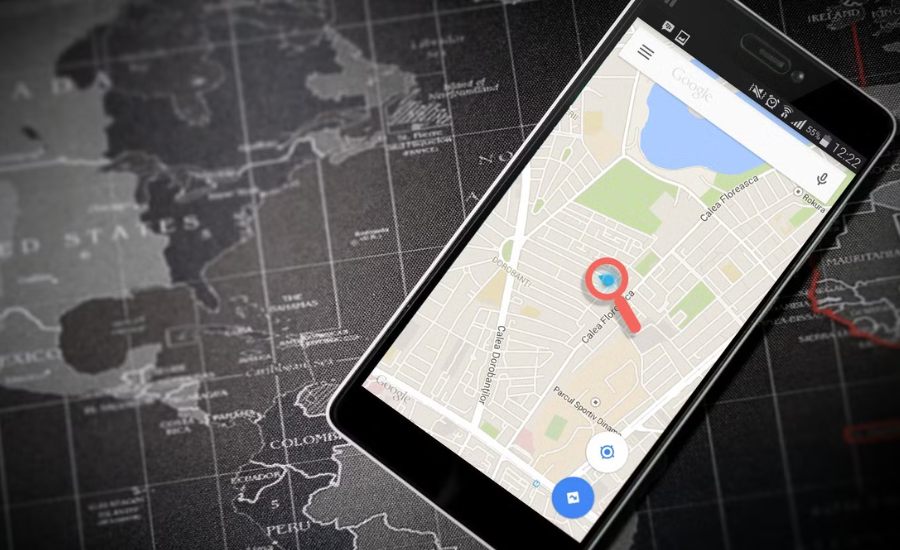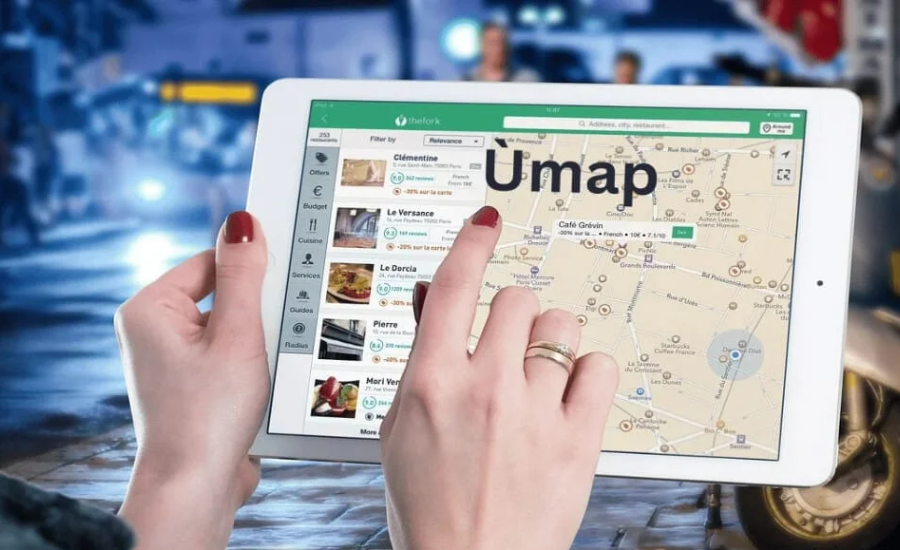In an age where digital visualization and geographic insights drive decision-making across diverse fields, Ùmap stands out as a pioneering platform. By blending innovation with functionality, Ùmap offers a versatile, powerful tool designed to meet the needs of both novice and expert cartographers. This adaptability has made Ùmap a valuable asset across industries—ranging from education and urban planning to environmental conservation, tourism, and emergency response. With its flexible design and intuitive interface, Ùmap enables the creation of highly interactive, visually engaging maps, making it a preferred choice for professionals and enthusiasts alike.
A User-Centric Approach: Simplifying Mapping for All

At the core of Ùmap’s success is its focus on accessibility and ease of use. Built with a user-centric philosophy, the platform allows individuals from varied backgrounds and expertise levels to create maps without needing extensive technical knowledge. The intuitive interface guides users through each step of the mapping process, from data entry to visualization, ensuring that even complex features are within reach for beginners. This focus on usability doesn’t sacrifice depth or detail but enhances the platform’s capacity for creating detailed, engaging maps that foster user interaction and engagement.
Streamlined Navigation for Efficient Workflows
Ùmap’s navigation and layout are designed for optimal efficiency. By simplifying complex geographic processes, Ùmap enables users to create and manage maps with minimal effort, keeping the focus on visualization rather than on navigation hurdles. The platform’s clear layout allows for easy access to essential tools like data layers, map styling, and visualization settings, making it quick and easy for users to produce maps that communicate valuable information effectively.
Fostering Engagement Through Interactive Features
Ùmap’s interactive capabilities set it apart from traditional mapping tools. Users can add clickable markers, pop-up information boxes, and interactive layers, making the maps far more than static images. Whether used to illustrate historical events in a classroom, track ecological changes, or guide tourists, these interactive elements turn maps into dynamic storytelling tools that engage users, helping them gain a richer understanding of geographic data.
Customization and Collaboration: Tailored Mapping for Every Need

One of Ùmap’s key strengths is its extensive customization options, allowing users to tailor their maps precisely to their project requirements. With options for adjusting colors, markers, data layers, and overlays, Ùmap provides full control over the map’s appearance and functionality, ensuring that users can make maps that suit their aesthetic and informational needs.
Collaborative Tools for Teamwork and Sharing
Collaboration is central to Ùmap’s appeal. Users can share maps with team members or the public, allowing for collaborative efforts on projects that benefit from multiple perspectives. This feature is particularly useful in fields like urban planning and disaster response, where input from various stakeholders and real-time updates are essential. Through this collaborative environment, Ùmap helps teams build on each other’s insights, creating more comprehensive and inclusive projects.
Real-Time Updates for Timely, Accurate Information
Ùmap’s support for real-time updates is invaluable in fast-paced environments, such as disaster response. Teams can update maps with current information, share these updates immediately, and ensure that everyone involved has access to the latest data. This feature has proven especially beneficial in situations where coordinated efforts and quick responses are crucial, like emergency evacuations or infrastructure repair following natural disasters.
Diverse Applications: Ùmap Across Industries
Ùmap’s versatility and robust features have made it an invaluable tool in a wide array of industries. Its ability to support customized, data-rich maps has led to its adoption in fields ranging from environmental science to tourism. Below is a closer look at some of the ways Ùmap’s features have found practical applications across various sectors:
Urban Planning and Infrastructure Development

In urban development, Ùmap’s interactive mapping is an essential asset. Planners use the platform to simulate infrastructure projects, assess the potential impact of changes, and engage stakeholders in an informed decision-making process. With its capability to visualize multiple data layers, Ùmap allows planners to analyze demographic information, land use, and environmental impact in one view. This enables planners to make more sustainable decisions, balancing growth with community needs and ecological preservation.
Enhanced Stakeholder Engagement
Engaging stakeholders is crucial in urban planning. Through Ùmap’s interactive maps, planners can visualize proposed changes and gather feedback from residents and other stakeholders. This fosters a more inclusive planning process, leading to outcomes that reflect the community’s needs and values. By providing a tangible visualization of future developments, Ùmap empowers stakeholders to give informed input, resulting in better, more inclusive urban plans.
Efficient Infrastructure and Service Planning
Ùmap simplifies infrastructure planning by allowing planners to layer different types of data. By combining geographic data with demographic and socioeconomic information, planners can forecast needs for utilities, transportation, and public services. This predictive capability is invaluable in cities with rapidly growing populations, as it allows planners to prioritize developments, reduce inefficiencies, and allocate resources effectively.
Environmental Conservation and Management

In environmental science, Ùmap’s capabilities allow for detailed tracking of ecological regions, biodiversity hotspots, and conservation efforts. Conservationists use the platform to map critical habitats, monitor species distributions, and identify areas at risk. This data-driven approach enables better resource allocation and informed decisions in environmental preservation.
Monitoring Habitats and Tracking Species
Ùmap’s ability to visualize spatial data over time is particularly useful for environmental monitoring. By regularly updating maps with new data, conservationists can observe shifts in habitats, track migration patterns, and detect environmental threats. This facilitates early intervention, helping to protect endangered species and maintain biodiversity.
Community-Based Conservation Initiatives
Ùmap’s collaborative features encourage local involvement in conservation efforts. Through community maps, residents can report on changes they observe in local habitats, participate in conservation planning, and feel more connected to environmental protection efforts. This community engagement is essential for fostering a culture of sustainability and shared responsibility for the environment.
Disaster Management: Revolutionizing Crisis Response

In emergency situations, fast and efficient response is essential. Ùmap’s mapping capabilities provide a lifeline for disaster management teams by facilitating coordinated relief efforts, improving communication, and enhancing overall preparedness.
Mapping High-Risk Areas
With Ùmap, disaster response teams can map areas prone to natural disasters, such as flood zones or earthquake-prone regions. This proactive mapping enables communities to prepare evacuation plans, set up emergency shelters, and identify key infrastructure locations. Having a detailed, up-to-date map of vulnerable areas ensures that when a disaster strikes, response teams can act swiftly and efficiently.
Real-Time Coordination and Communication
During a disaster, Ùmap’s real-time collaboration tools allow response teams to share live updates, track resource distribution, and communicate with field operatives. This level of coordination is critical in crisis scenarios, where information changes rapidly and teams must respond to evolving conditions.
Post-Disaster Analysis for Improved Preparedness
After the immediate response, Ùmap assists with recovery efforts by providing tools for damage assessment and prioritizing rebuilding efforts. Teams can analyze the aftermath and evaluate which areas need resources most urgently, making it easier to allocate funds and organize volunteer efforts. Post-disaster analysis through Ùmap also allows communities to better prepare for future events, using lessons learned to improve infrastructure and crisis response plans.
Tourism and Travel: Enhancing the Visitor Experience

In the travel industry, Ùmap transforms how tourists explore new places. Businesses can create interactive maps highlighting attractions, restaurants, and scenic routes, offering visitors an immersive guide to their destination. These maps serve as more than just navigational aids—they offer travelers a richer, more informed experience.
Interactive Tourist Guides for Unique Experiences
Ùmap allows travel companies to craft digital guides that go beyond traditional maps. By adding details about landmarks, local stories, and historical context, these guides enable travelers to explore destinations more deeply. This immersive experience appeals to modern tourists who seek meaningful, personalized travel adventures.
Supporting Local Economies Through Exposure
Local businesses benefit from exposure on Ùmap, as they can highlight their locations, services, and promotions directly on the map. This encourages visitors to discover and support local enterprises, which boosts the local economy and promotes sustainable tourism.
Educational Tools: A New Approach to Learning Geography
In academic settings, Ùmap serves as an interactive tool for teaching geography, environmental science, and history. Its features encourage students to engage with data in a practical way, fostering a deeper understanding of geographical concepts.
Interactive Learning for Students
Ùmap makes it easy for educators to create maps tailored to lesson plans, allowing students to explore concepts through interactive visuals. By studying real-time data, students gain hands-on experience that reinforces classroom learning, turning abstract concepts into tangible insights.
Practical Applications of Geographic Knowledge
For fields like environmental studies and urban planning, Ùmap offers students a chance to work on real-world projects. Students can use the platform to design conservation plans, analyze demographic data, or simulate urban development, providing them with practical skills that are invaluable in professional environments.
Facts
- User-Centric Design:
Ùmap is designed with a user-friendly interface, making it accessible for both novices and experts in mapping.
- Interactive Mapping:
Users can add clickable markers, pop-ups, and layers to make maps interactive and engaging, suitable for educational, environmental, and tourism applications.
- Customization and Collaboration:
Ùmap allows extensive customization, including colors, markers, and overlays. It also supports real-time updates, enabling collaboration and sharing.
- Real-Time Data:
Ùmap’s support for real-time data updates aids critical sectors like disaster response, allowing timely information sharing and coordination.
- Multi-Industry Application:
Used in urban planning, disaster management, environmental conservation, tourism, and education.
- Visualization Tools:
Ùmap’s tools allow users to overlay diverse data types for comprehensive visualization, useful for urban planners and environmental scientists.
- Free and Open Source:
Ùmap is an open-source tool, making it widely accessible and affordable for various users and industries.
FAQs
Q: What is Ùmap?
A: Ùmap is a digital mapping and geospatial analysis platform that allows users to create interactive, customizable maps for various applications, from education and tourism to environmental conservation and disaster management.
Q: Who can use Ùmap?
A: Ùmap is designed for users of all skill levels, from beginners to advanced cartographers. Its intuitive design makes it accessible for students, professionals, researchers, and enthusiasts.
Q: Is Ùmap free to use?
A: Yes, Ùmap is open-source, meaning it’s free to use, making it an affordable option for individuals and organizations.
Q: Can I update maps in real-time on Ùmap?
A: Yes, Ùmap supports real-time data updates, which is essential for time-sensitive applications like disaster response and dynamic projects.
Q: Does Ùmap support collaborative projects?
A: Yes, Ùmap allows multiple users to collaborate on maps, making it ideal for team-based projects, particularly in urban planning, environmental monitoring, and crisis response.
Q: What customization options are available in Ùmap?
A: Ùmap offers various customization options, including data layers, colors, markers, and overlays, allowing users to tailor their maps to specific needs and preferences.
Q: How is Ùmap used in education?
A: Ùmap serves as a hands-on educational tool, enabling interactive learning in geography, environmental studies, and history, providing students with practical mapping experience.
Conclusion
Ùmap is a versatile, user-friendly mapping tool that caters to a broad audience across diverse industries. With a design focused on ease of use and customization, Ùmap empowers users to create interactive, data-rich maps that go beyond basic visualization. From enhancing urban planning and disaster response to supporting environmental conservation and enriching educational experiences, Ùmap’s adaptability and open-source accessibility make it a revolutionary tool in the digital mapping landscape. Whether for practical analysis, community engagement, or immersive learning, Ùmap provides a powerful, affordable solution for informed geographic insights and decision-making.
Keep this in your circle: Article Forward
